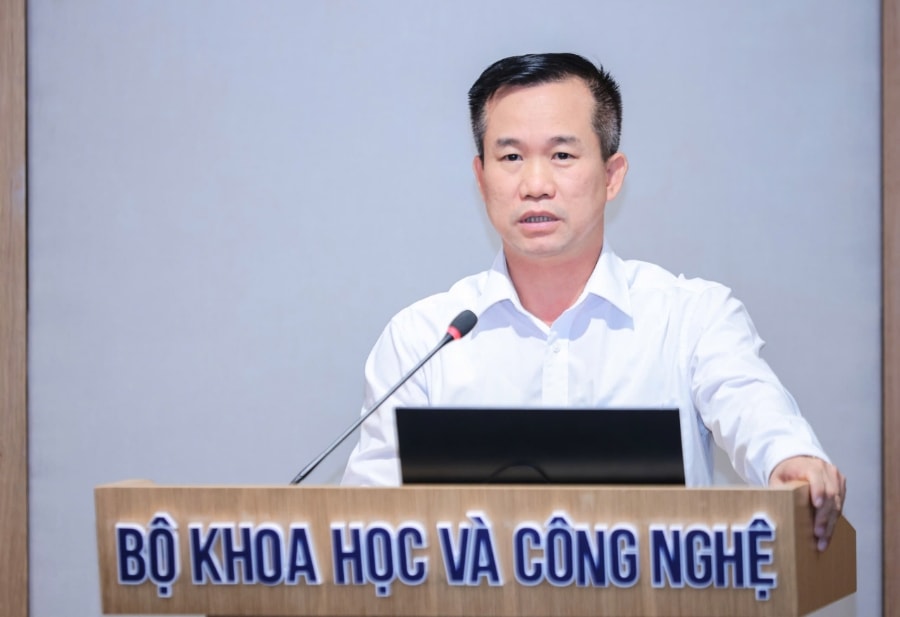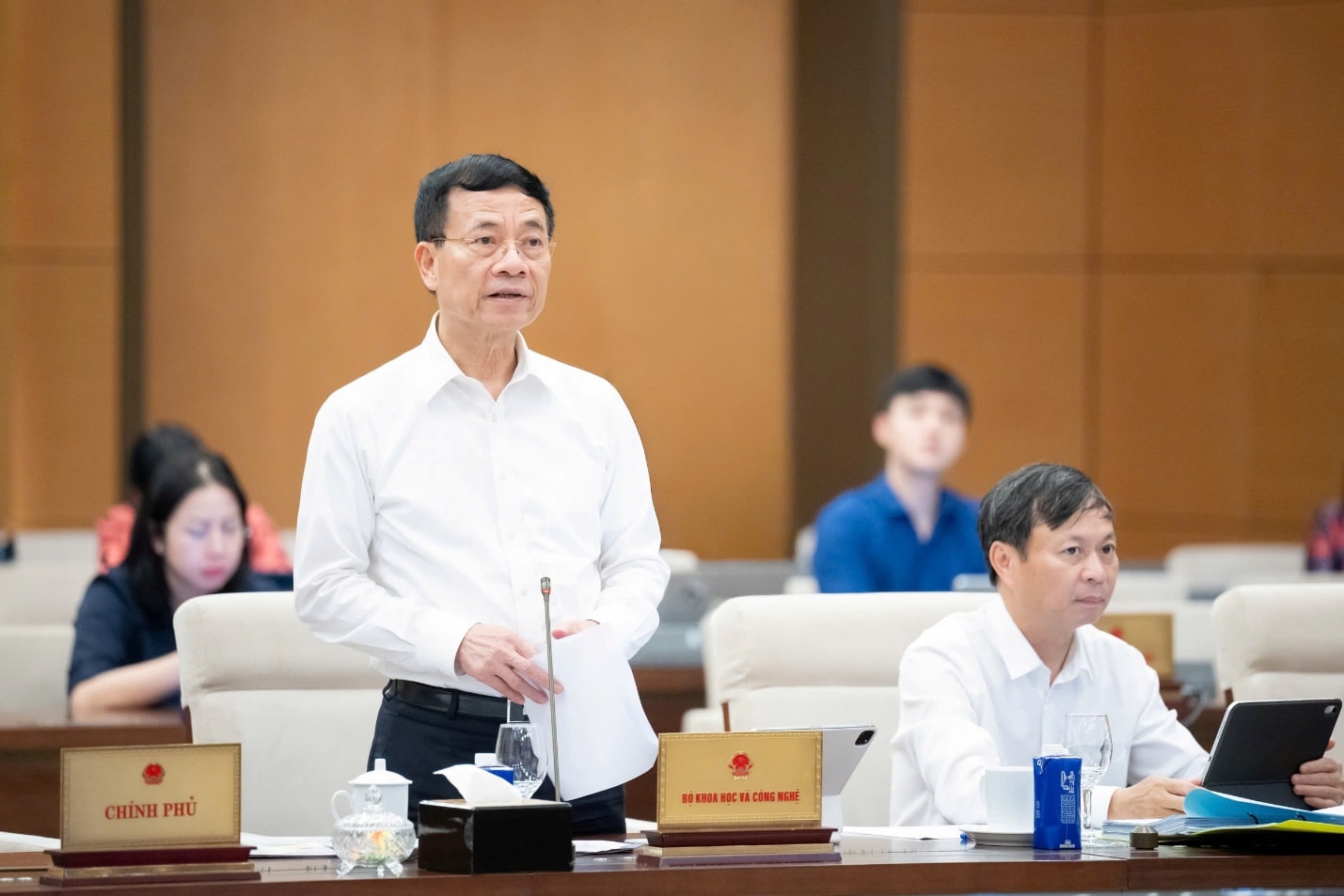Amending the Law on Technology Transfer to develop science and technology market
In the context of digital transformation, international integration and the requirements of sustainable development, the Ministry of Science and Technology is urgently finalizing the Draft Law on Technology Transfer (amended) to ensure timely submission to the National Assembly for review and approval.

Completing the legal framework for technology transfer
The 2017 Law on Technology Transfer created a legal corridor for technology transfer activities within the country, as well as technology transfer from abroad into Vietnam and from Vietnam to other countries. The Law provided the legal framework for the subjects, forms, methods of technology transfer, and the rights associated with technology transfer.
However, after nearly a decade of implementation, the Law on Technology Transfer has revealed limitations and inadequacies. It has not kept pace with the rapid global development of science, technology, and innovation; nor has it met the breakthrough requirements for advancing science, technology, innovation, and digital transformation to drive strong national development in the new era.
For instance, the scope of technologies regulated does not cover emerging technologies; financial, legal and institutional policies for both technology transferors and transferees are incomplete; policies encouraging endogenous technology transfer are lacking; the science and technology market remains weak; and state management of technology transfer remains ineffective.
According to Mr. Nguyễn Phương Tuấn, Deputy Chairman of the Committee for Science, Technology and Environment, amending and supplementing several articles of the Law on Technology Transfer is necessary and urgent in order to improve the legal framework for technology transfer and enhance transparency and the effectiveness of state management.
The Draft Law aims to create favorable conditions for scientific research and Vietnamese enterprises to access advanced technologies while managing risks, protecting intellectual property rights, and enhancing decentralization and administrative simplification. It also seeks to develop the science and technology market, promote innovation, and support technology transfer for enterprises, organizations, and individuals.
At the Ministry of Science and Technology’s regular press briefing in September, Mr. Chu Thúc Đạt, Deputy Director General of the Department of Innovation, stated that the Draft amended Law on Technology Transfer was developed to achieve 4 main objectives: improving the legal framework; promoting a transparent science and technology market; encouraging commercialization of research results; fostering innovation and strengthening control over cross-border technology transfer activities, while enhancing state management capacity.

According to Deputy Director General Chu Thúc Đạt, the Draft Law focuses on revising and supplementing six groups of new policies:
First, the scope of technologies regulated in the Law becomes more comprehensive, with added concepts and new technologies such as strategic technologies and green technologies.
Second, promoting endogenous technology transfer, including technology transfer among domestic enterprises/organizations and individuals, commercialization of research and development outcomes, provisions on ownership and usage rights for technologies, capital contributions in the form of technology to investment projects, and revisions to the list of technologies encouraged for transfer.
Third, developing the science and technology market towards greater professionalism and transparency. The Draft introduces policies for market intermediaries such as technology exchanges, incubators, technology transfer services, technology valuation and appraisal organizations, and provides more detailed regulations on the content of technology transfer contracts.
Fourth, creating financial, institutional, and legal incentives for technology transfer activities. This includes reviewing and supplementing incentive policies for both technology transferors and transferees. Foreign-invested enterprises that publicly announce and implement plans to transfer technology to Vietnamese enterprises will receive incentives.
Additionally, international tenders involving strategic industrial technologies must include commitments from general contractors and foreign contractors on technology transfer and human resource training for Vietnamese enterprises.
Fifth, to ensure technological security and enhance international cooperation efficiency, the Draft supplements regulations on controlling cross-border technology transfer activities, including outward transfers from Vietnam, and revises prohibited acts in this field.
Sixth, strengthening regulations on monitoring, statistics, and measurement of technology transfer effectiveness. Specifically, investment projects involving the use of technology must undergo technology appraisal from the stage of assessing and approving investment policies.
The Draft also adds requirements for technology appraisal for projects that must register for investment certification but are not subject to investment policy approval, while clearly defining the responsibilities of the appraisal lead agency in coordinating technological supervision. It also includes provisions on reporting mechanisms, information disclosure on the Technology Transfer Portal, and decentralization of management to enhance enforcement.
With new points such as expanding the scope of regulation, strengthening financial and legal incentives, and encouraging commercialization of research results, the Draft Law is expected to establish a modern and transparent legal framework that promotes innovation and develops the science and technology market.
On that basis, the Law on Technology Transfer is not only a legal tool for managing technological activities, but also a driving force for nurturing the innovation ecosystem and enhancing national competitiveness in the context of deep international integration.
Prioritizing technology transfer to create a driving force for national development
According to the Minister of Science and Technology Nguyễn Mạnh Hùng, for many years, Vietnam has focused mainly on processing and assembly, without paying sufficient attention to mastering technologies. It is now time to develop based on science, technology, and innovation. The Minister emphasized that the Draft Law streamlines administrative procedures, updates the list of new and strategic technologies, and expands incentives for technology transfer activities.

The Draft Law classifies technologies into 3 groups: prohibited, restricted, and encouraged for transfer. The prohibited group includes outdated and polluting technologies, those affecting national defense, security, health, and social ethics. The restricted group includes low-efficiency machinery, technologies generating waste, using scarce resources, or involving specific know-how, breeds, or materials that may only be transferred with permission. The encouraged group includes new, modern, and environmentally friendly technologies that receive the highest incentives in terms of tax, capital, and administrative procedures.
Additionally, the Draft Law stipulates 3 levels of technology transfer: application, mastery, and research & development. Each level receives progressively increasing state support and incentives to encourage enterprises to move toward mastering and creating technology.
The Draft Law also introduces regulations on intermediary technology transfer organizations - common in many developed countries but still lacking in Vietnam. These organizations will help small businesses and disadvantaged localities access, adopt, and master new technologies.
The Draft further expands into endogenous technology transfer, encouraging the commercialization of domestic research results. Enterprises and scientists may contribute capital in the form of technology, and the State may purchase and disseminate mastered technologies to support production.
Policies enhancing control of cross-border technology transfer are also revised and supplemented to ensure technological security while promoting the export of Vietnamese technologies. The State will develop a transparent and professional science and technology market, with exchanges and technology announcement centers serving as hubs connecting supply and demand./.
Translated by Vietnam Journal of Science and Technology (VJST - MOST).
